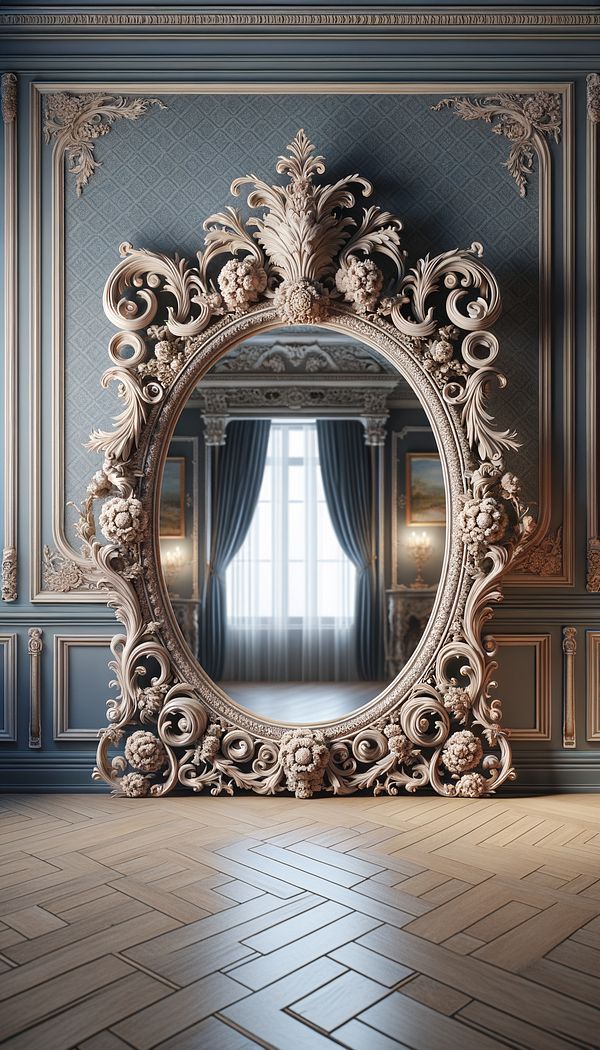What is Cresting?
Cresting is a decorative motif often featuring a series of repetitive shapes or forms.
Description
Cresting, in the realm of interior design, refers to a decorative design element that usually showcases a succession of intricate, repetitive shapes or forms. This architectural detail is often inspired by the natural world or historical motifs and can be found adorning various features within a home or building, such as furniture, doorways, mirrors, and more. Cresting finds its roots in gothic and Victorian architecture, where it was commonly used to embellish the apex of roofs, spires, and gates.
Over time, the application of cresting has evolved, with designers incorporating this ornate detailing into both traditional and contemporary spaces. It serves not only a decorative purpose but also adds a layer of texture and depth to the surfaces it adorns. Generally made from materials including wood, metal, and ceramics, cresting contributes to the overall aesthetic and feel of an interior space, offering a unique blend of elegance and historical flair.
Given its versatile nature, cresting can seamlessly integrate into various design styles, adding a touch of sophistication and refined beauty. Whether adorning the top of a mirror frame in a classic living room setup or enhancing the edges of an outdoor gate in a modern home, cresting brings a distinct character to any design project.
Usage
A popular application of cresting is found in the intricate detailing of antique furniture pieces, such as the ornate edges of headboards and mirror frames. In architectural settings, cresting is used to decorate the tips of gables and rooflines, enhancing the visual appeal of buildings. Additionally, modern interpretations of cresting can be seen in decorative wall treatments and finishes, where it adds texture and historical depth to otherwise simple spaces.
FAQs
-
Can cresting be used in modern interior designs?
Yes, cresting can be seamlessly incorporated into modern interior designs. By selecting cresting with clean lines and minimalist shapes, it can add an element of sophistication to contemporary spaces without overwhelming them.
-
What materials are commonly used for cresting?
Cresting is commonly made from materials such as wood, metal, and ceramics. The choice of material often depends on the application and desired aesthetic.
-
Is cresting exclusive to certain design styles?
No, cresting is not exclusive to any specific design styles. It is highly versatile and can be adapted to complement a wide range of styles, from traditional to contemporary.
Practical Application
When incorporating cresting into your interior design projects, consider the overall style and theme of the space. For traditional settings, choose intricate and ornate designs that reflect historical motifs. For modern spaces, opt for simpler, more geometric shapes to maintain a clean and contemporary look. Always ensure the scale and material of the cresting complement the rest of the decor for a cohesive design.
-
Architectural Elements199 articles
-
Design Styles478 articles
-
Decorative Objects240 articles
-
Fabrication & Craftsmanship133 articles
-
Wall Treatments & Finishes157 articles
-
CassapancaA Cassapanca is an Italian Renaissance chest, often ornately decorated and used for seating as well as storage.
-
Center DrawA center draw refers to a method of opening window treatments, such as curtains or drapes, from the center outward.
-
Comb BackA distinctive chair design characterized by a series of vertical spindles that stretch upwards to form a high backrest.
-
Greek StyleGreek Style refers to the design and decoration principles originating from ancient Greece.
-
Italian ProvincialItalian Provincial is a design style that blends refined elegance with a rustic, countryside vibe.
